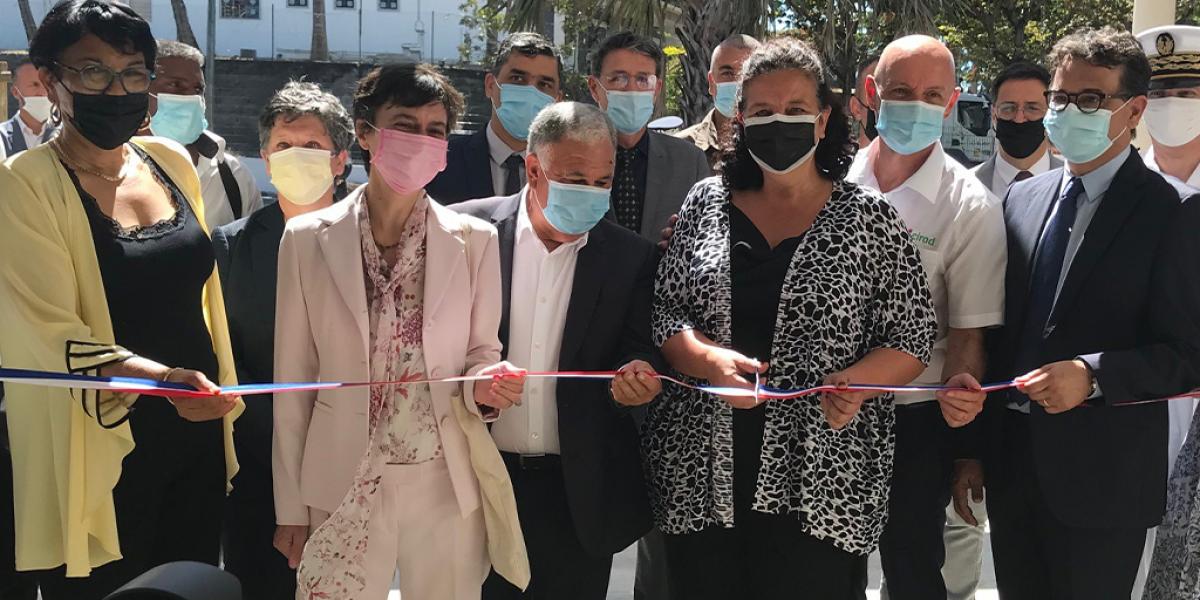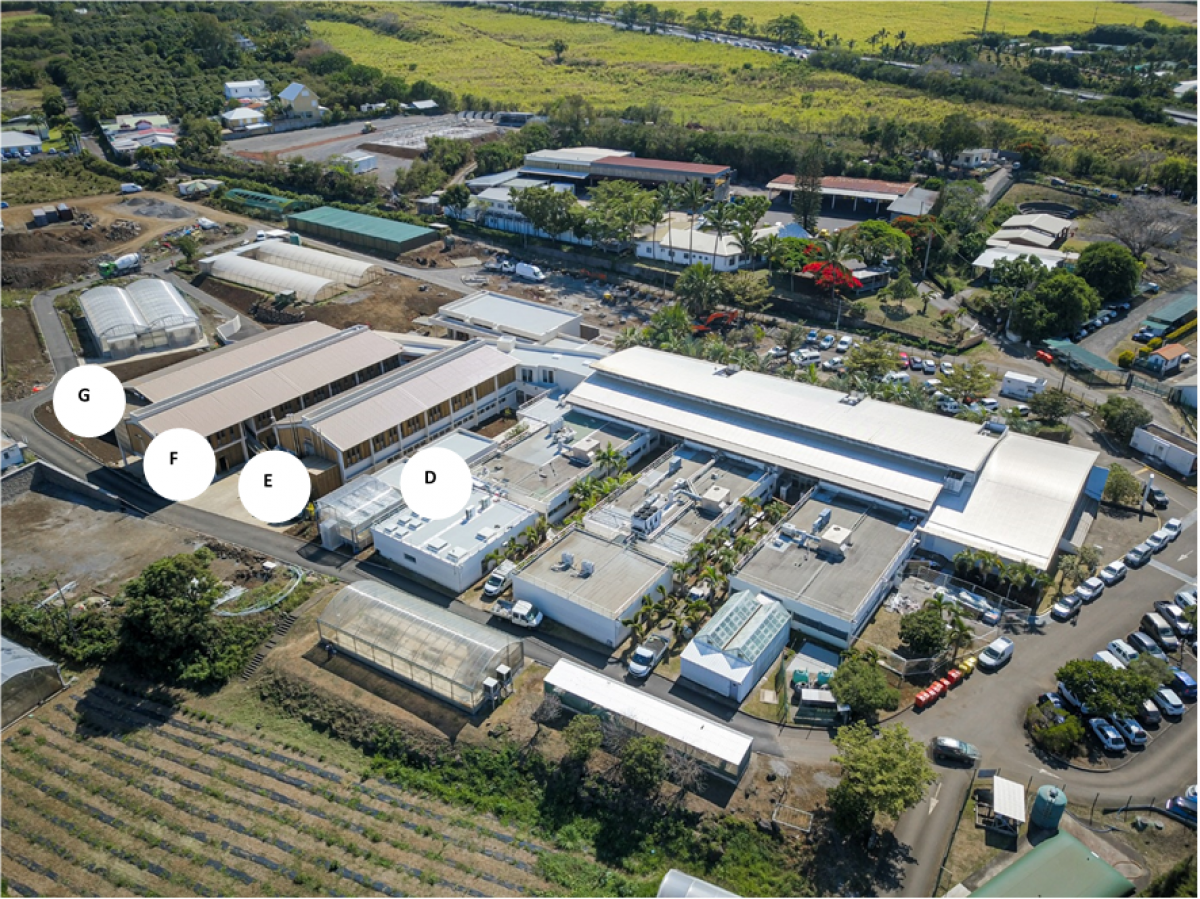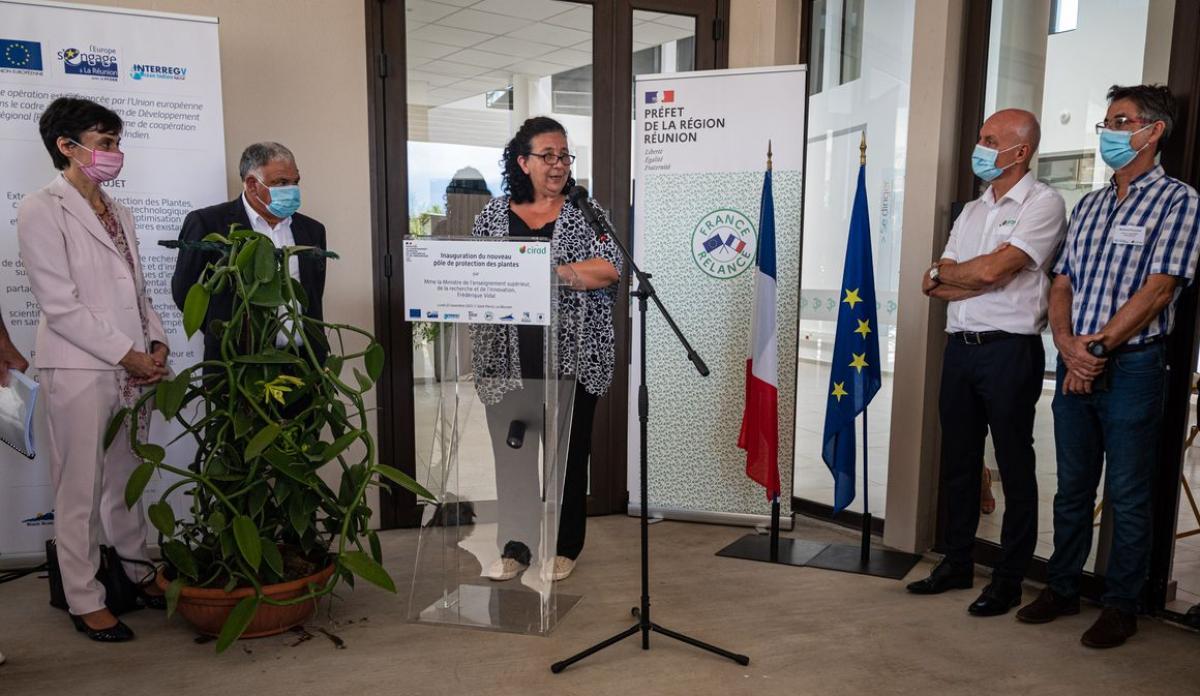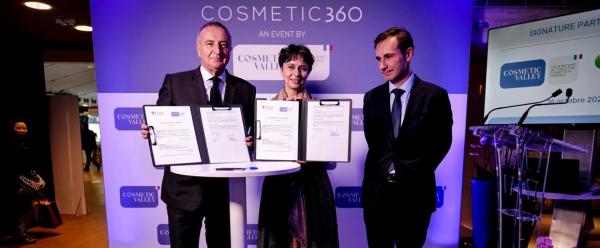Institutional news 24 November 2025
- Home
- Press area
- Press releases
- Plant Protection Platform extension
The Plant Protection Platform: major renovations and an extension to meet plant health and biodiversity challenges
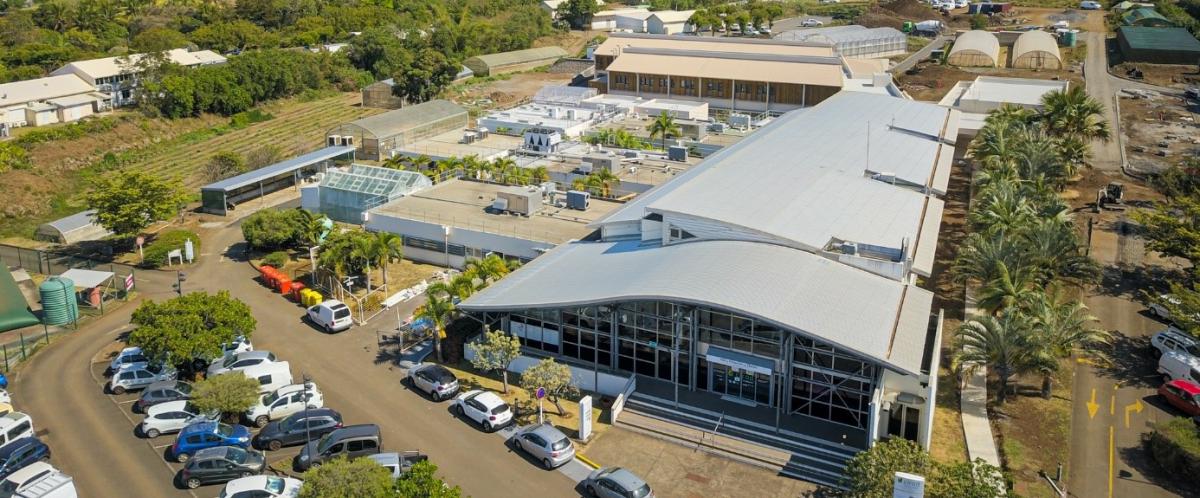
L'extension du Pôle de protection des plantes a été inaugurée le 22 novembre 2021 © R. Solesse, Cirad
Launched in October 2019 with the financial support of the Réunion Regional Council, the French state and in particular the France Relance plan, ADEME and European funding, “the work on the Plant Protection Platform represents 3 200 m² of new infrastructures and 800 m² of renovations”, says Eric Jeuffrault, CIRAD’s Regional Director for Réunion-Mayotte.
“With this modern, high-tech infrastructure, CIRAD aims to build a regional centre for research, technological development and innovation on issues of agricultural and environmental interest that are shared with the territory and the countries of the Indian Ocean”.
The Plant Protection Platform conducts research including:
- Biological control of the sugarcane stem borer, an insect pest, using the trap crop Erianthus;
- Implementation of the sterile insect technique to control Bactrocera dorsalis, the oriental fruit fly, or Aedes albopictus, the tiger mosquito;
- Development of molecular tools for epidemiological surveillance in the citrus sector (surveillance of Huanglongbing, bacterial canker or citrus tristeza virus);
- Sequencing of the genetic materials of different organisms, from the virus associated with mealybug wilt of pineapple in Réunion to the genome of Vanilla planifolia, a traditional vanilla plant in Réunion;
- Efforts to prioritise control of invasive alien plants in Réunion;
- Safeguarding and conservation of important heirloom varieties of cultivated plants in Réunion at the Vatel Biological Resource Centre (BRC).
A first-rate scientific facility specialising in the development of plant health solutions
This new infrastructure brings together in one place all of the local actors involved in plant health research and development, both private and public, from the field to the laboratory, with capacity to host actors with complementary expertise: CIRAD, University of Réunion, FDGDON, ANSES, INRAe, IRD, MNHN, GDS, and situated nearby in interaction with the Coccinelle biofactory, the Réunion National Park with its office, which will move in the South next year.
Three new wings and an extension, covering a total area of 3 200 m², will reinforce this technological platform with new equipment and laboratory areas as well as better hosting facilities.
The new buildings cover four focal areas:
- Terrestrial ecology (extension of wing D): this structure now has a laboratory dedicated to chemical ecology, whose work is aimed at promoting agroecological protection techniques to control insect pests of crops.
- Molecular biology (wing F): this new wing has facilities for three times as many scientists and includes all technologies needed to access the genetic material of the different biological models used in research. It will enable the development of research on genetic sequencing and molecular epidemiological surveillance.
- Genetic resources (wing G): this structure centralises the various collections of biological resources (BRC Vatel, etc.) for use by the different ongoing and upcoming scientific projects on food security and biodiversity.
- Finally, a shared space to ensure economies of scale and costs for the scientific preparatory activities (wing E) required by the various research projects. It is used in particular for the production of liquid nitrogen and biological media, the centralised storage of chemical reagents, etc.
These new facilities will strengthen the agricultural research activities conducted in partnership within the Plant Protection Platform, such as:
- Contributing to epidemiological surveillance efforts for major tropical pests;
- Participating in the agroecological transition and strengthening biocontrol, in particular by developing biological control methods;
- Protecting, restoring and enhancing biodiversity locally and in the Indian Ocean region through the conservation of biological resources of nutritional interest (BRC Vatel), with efforts to structure the sectors, but also to control invasive alien species with the development of decision support tools for managers. This also concerns the preservation of bees (a pollinator essential to agriculture) through research to better understand the mechanisms involved in natural resistance in bees to varroa, a parasitic mite that attacks bees.
“Providing a real research platform for agriculture in Réunion and the Indian Ocean, this facility reflects our desire to contribute with our partners to the scientific and technical outreach of Réunion and the Indian Ocean region”, says Elisabeth Claverie de Saint Martin, CEO of CIRAD. “This is one of CIRAD’s most important infrastructures in France”.
A 200 m² conference room completes this project. It can now accommodate up to 140 people, enabling the organisation of international conferences and seminars: a real asset for the southern part of Réunion.
FDGDON : Fédération départementale des groupements de défense contre les organismes nuisibles de La Réunion
ANSES : Agence nationale de sécurité sanitaire de l'alimentation, de l'environnement et du travail
MNHN : Muséum national d'Histoire naturelle
GDS : Groupement de défense sanitaire
IRD : Institut de recherche pour le développement
The extension of the Plant Protection Platform was made possible by financial support from the Réunion Regional Council, the French State, ADEME, CIRAD and EU funding under ERDF Convergence and ERDF Interreg V.

























